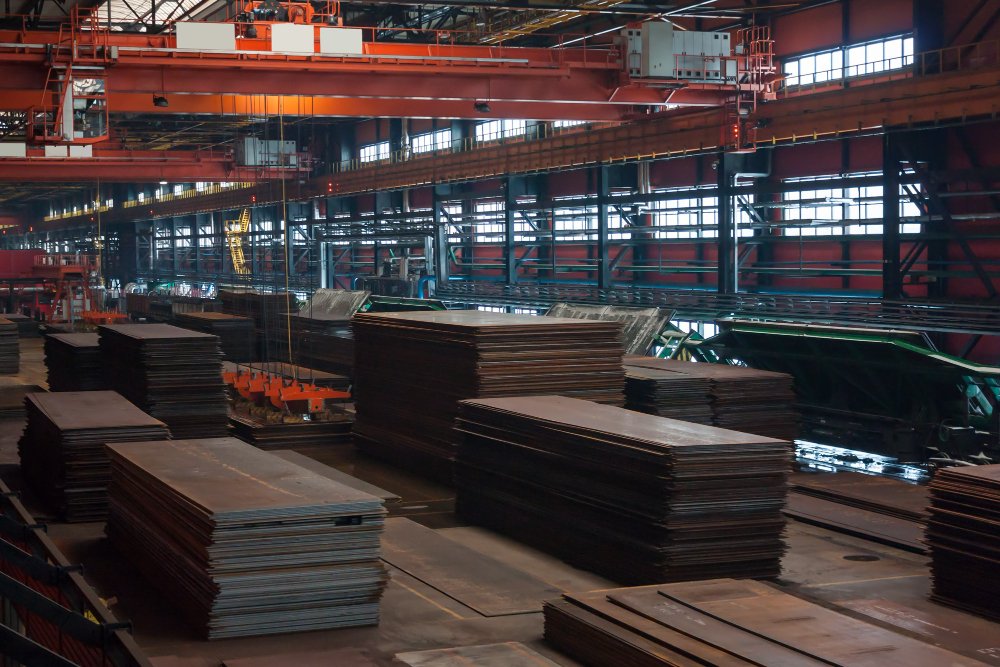Galvanized Iron (GI) sheets are the most reliable material in the Philippine building sector. Being durable, corrosion-resistant, and versatile, GI sheets find applications in roofing, cladding, fencing, and other structural works. For a tropical nation exposed to excessive rain, heavy humidity, and recurrent typhoons, such sheets are the vital solution for durable and cost-efficient construction. This article discusses the importance of GI sheets in the Philippines in promoting construction longevity, their uses, challenges, and future developments.
Introduction to GI Sheets
Overview of GI Sheets
These sheets are zinc-coated steel sheets with a protective layer of zinc applied through galvanization. The zinc coating forms a barrier against oxygen and moisture and inhibits rust and corrosion. There are two principal types of GI sheets used, which include hot-dip galvanized and electro-galvanized. Hot-dip galvanized sheets possess a higher thickness of zinc and are hence more appropriate for exterior use, such as in roofing. Electro-galvanized sheets are thinner in coating and are mostly utilized where smooth finishes and aesthetics are essential.
When environmental conditions are severe in the Philippines, their durability makes them a necessity. They are not just resistant to rust but also to harsh weather conditions such as typhoons. These attributes make them a builders’ go-to if they want to build sustainable and durable structures.
Importance in Construction
Another reason for their popularity is how affordable they are. Even while they may cost more up front than some alternatives, they wind up being a more cost-effective choice over time due to their long lifespan and little maintenance requirements. Builders also value these sheets’ adaptability because they can be used for structural components, walls, fences, and roofing. Their adaptability ensures that they may be used for a variety of construction tasks.
Applications of GI Sheets in Construction
Roofing Applications
GI sheets are most commonly associated with roofing in the Philippines. Corrugated GI sheets, in particular, are widely used due to their strength and ability to channel rainwater efficiently. They are especially popular in rural areas where affordability and ease of installation are critical considerations.
In urban settings, pre-painted long-span GI sheets are often preferred for their aesthetic appeal and enhanced durability. These factory-coated sheets come with additional layers of protection against rust and corrosion, making them ideal for modern buildings that combine functionality with design.
Cladding Applications
These sheets also serve as effective cladding materials for walls. They provide structural support while protecting buildings from environmental damage such as moisture infiltration. Cladding with these sheets is not only practical but also allows architects to experiment with different textures and finishes to achieve visually appealing facades.
Structural Components and Fencing
Structural Elements
While not typically used as primary structural components like beams or columns, these sheets contribute to lighter structural elements where strength-to-weight ratio matters. For example, they can be used in composite panels or as reinforcements in temporary structures.
Fencing Applications
These sheets are a popular choice for fencing due to their durability and low maintenance requirements. They offer a secure barrier that is resistant to rust and weathering, making them suitable for both residential and commercial properties.
Challenges and Future Trends
Environmental Concerns
Despite their many advantages, these sheets face challenges related to sustainability. The production of zinc involves significant environmental costs, including energy consumption and waste generation. Additionally, improper disposal of old or damaged sheets can contribute to environmental degradation.
To address these concerns, recycling practices are becoming increasingly important. Recycling zinc from old sheets not only reduces waste but also minimizes the need for new raw materials. Alternatives like zinc-aluminum coatings (e.g., Zincalum) are also gaining traction as they offer similar benefits while using less zinc.
Resilience and Urbanization
The Philippines’ vulnerability to natural disasters underscores the importance of resilient construction materials like GI sheets. Their ability to withstand strong winds and heavy rainfall makes them essential for disaster-resistant structures.
Urbanization is another factor driving the demand for these sheets. As cities expand rapidly, there is a growing need for affordable housing solutions that can be built quickly without compromising on quality or durability. These sheets fit this requirement perfectly due to their ease of installation and long-lasting performance.
Advantages of Using GI Sheets
Corrosion Resistance
The zinc coating protects against rust even in humid or coastal environments.
Durability
With proper maintenance, these sheets can last decades.
Cost-Effectiveness
Their long lifespan offsets higher initial costs.
Versatility
Available in various sizes and thicknesses for different applications.
Low Maintenance
Minimal upkeep is required compared to other materials.
Disadvantages of Using GI Sheets
Initial Cost
Higher upfront costs compared to some alternatives.
Zinc Coating Thickness
Thinner coatings may require more frequent maintenance.
Environmental Impact
Zinc production has ecological implications if not managed sustainably.
Key Takeaway
GI sheets in the Philippines play an integral role in enhancing construction durability. Their resistance to corrosion, ability to withstand harsh weather conditions, and cost-effectiveness make them indispensable in both rural and urban settings. While challenges related to sustainability remain, advancements in recycling practices and alternative coatings hold promise for reducing their environmental impact.
As the Philippine construction industry continues to grow amidst increasing urbanization and climate challenges, the demand for durable materials like these sheets will only rise. By focusing on innovation and sustainability, these materials can continue to meet the needs of builders while contributing to more resilient infrastructure across the country.
Related Reads
- Why You Shouldn’t Delay File Cabinet Lock Replacement in Bolingbrook
- How a King Size Bed Can Transform Your Sleep Quality and Well-being
- The Power of Glossy Anodized Aluminum in the Construction Industry Today
- Exploring the Best Art Classes in Wong Chuk Hang for Beginners and Pros
- Why Ceiling Water Damage in Brooklyn Is a Health Hazard



